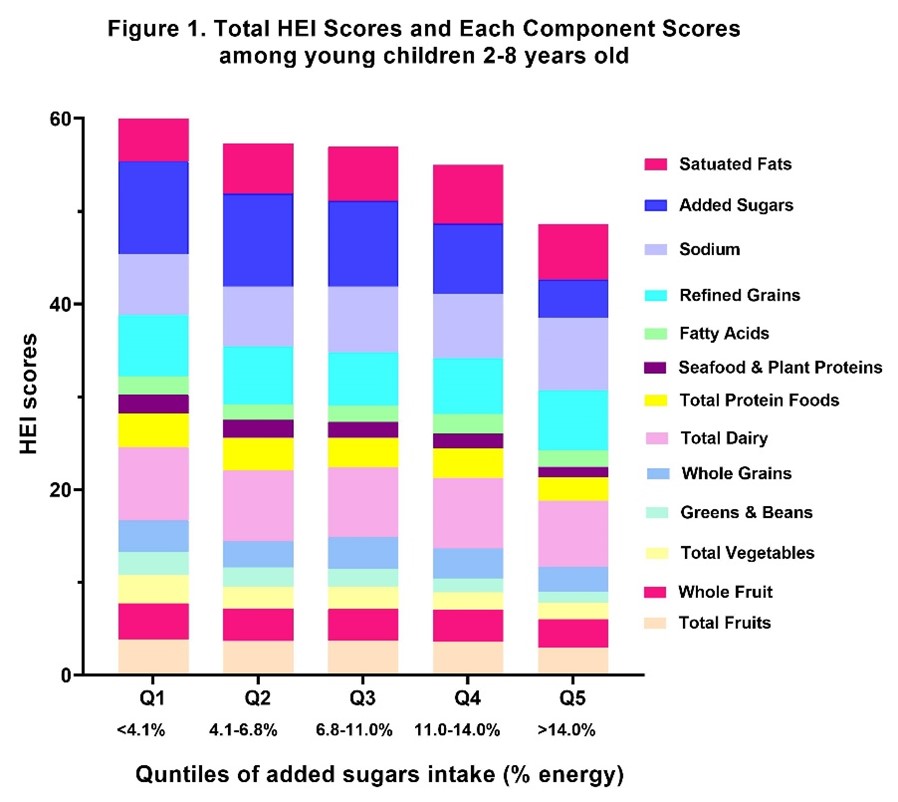Whats New
Association Between Added Sugars Intake and Diet Quality in Canadian Children
CSI’s Manager of Nutrition & Scientific Affairs, Dr. Flora Wang, presented a research poster at this year’s Dietitians of Canada National Conference (September 15-16), which showcased new findings on the association between intakes of added sugars and Healthy Eating Index (HEI)-2015 scores among young children (2-8 years).
There is continuing debate regarding the impact of added sugars consumption on overall diet quality, which remains a research gap among the Canadian population. The Healthy Eating Index (HEI)-2015 acts as a measure of diet quality by scoring how closely dietary patterns are aligned with the 2015-2020 Dietary Guidelines for Americans, and examining the healthy food items chosen within each food category.
Key findings from the research poster include:
- There was an inverse association between added sugars intakes and total HEI-2015 scores – the association was non-linear with the greatest reductions in HEI-2015 scores for children at the highest added sugars intakes.
- For children aged 2-8 years, total HEI scores ranged from 60.7 for those with the lowest added sugars intake (quintile 1 or Q1, <4.1% energy from added sugars), to 48.6 for children with the highest added sugars intake (Q5, >14.0% energy from added sugars) (see Figure below).
- There was no significant difference in total HEI-2015 scores between children in Q2 to Q4 (with mean added sugars intakes between 4.1 - 14.0% energy).
- Based on the component scores, different dietary patterns were observed for intakes of sodium, saturated fat, dairy foods, and whole grains, suggesting distinctive food choices across different levels of added sugars intake.

Similar analysis has been conducted for older children and adolescents (aged 9-18 years), and adults (19+ years), which will be included in a future publication.
For more information, view the research poster:


